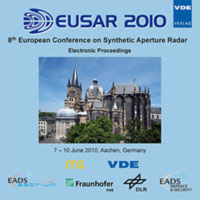Long-wavelength Pol-InSAR for glacier ice extinction estimation
Konferenz: EUSAR 2010 - 8th European Conference on Synthetic Aperture Radar
07.06.2010 - 10.06.2010 in Aachen, Germany
Tagungsband: EUSAR 2010
Seiten: 4Sprache: EnglischTyp: PDF
Persönliche VDE-Mitglieder erhalten auf diesen Artikel 10% Rabatt
Autoren:
Sharma, Jayanti J.; Papathanassiou, Konstantinos P. (Microwaves and Radar Institute, German Aerospace Center (DLR), Münchner Straße 20, 82234 Weßling, Germany)
Hajnsek, Irena (DLR and Institute of Environmental Engineering, ETH Zürich, Wolfgang-Pauli-Str. 15, 8093 Zurich, Switzerland)
Inhalt:
In recent years there has been increased interest in using synthetic aperture radar (SAR) to study and monitor glaciers for climate change research. This paper describes the estimation of ice extinctions through modelling of Pol-InSAR (polarimetric interferometric SAR) coherences as a combination of a surface contribution (from the snow-firn interface and wind-induced features) and a volume response. Ground-to-volume scattering ratios derived from a novel polarimetric decomposition are used in conjunction with Pol-InSAR interferometric coherence magnitudes to invert the extinction of the ice layer. The inversion is performed with experimental airborne Pol-InSAR data at L- and P-band collected using DLR’s E-SAR system over the Austfonna ice cap in Svalbard, Norway as part of the 2007 ICESAR campaign. Extinction-dependencies on frequency and glacier zone are investigated, and validation is performed comparing P-band sounder data to inverted extinction values.


